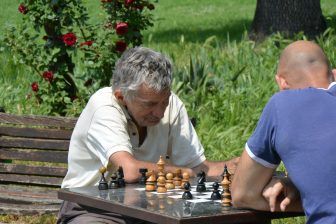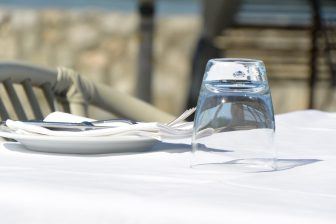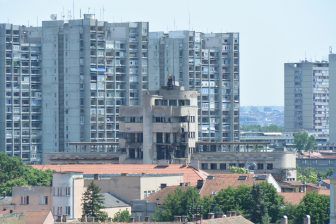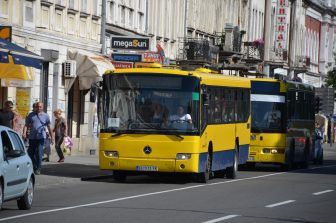
The next place we stopped at during the walking tour in Belgrade, in Serbia, was a mosque.
This 
It was built at the end of the 17th century.
Apparently, Bajrakli means ‘flag’ and that is because they used to hoist a flag to call to prayers.
After the Turkish rule ended, the mosque was abandoned for a while but reopened at the end of the 19th century for the Muslims who stayed on in the city and it is still used today.
But anyway, the Muslims only make up 2-3% of the population of Serbia, apart from Kosovo.
The main religion in this country is the Serbian Orthodox Church.
I did not know this, but each Orthodox Church has headquarters in each country and each one’s doctrines are slightly different.
After the mosque, we went to Kalemegdan park and fortress.
Within the site, there is a zoo, some sports facilities, restaurants and other things, and it is the main place of rest and relaxation for the citizens of Belgrade.
The fortress was originally built in the Roman era but, after that, each following ruler reinforced it, so they cannot say when the current architecture was built, according to our guide, Tamara.
She said that Belgrade is thought to be the oldest town in Europe.
5000 years ago, the first people living here were very peaceful and so they cannot find any weapons at all from the archaeological sites.
Then the Celts came in and introduced war, and after that the Romans came.
Tamara said “There were 140 wars in this city and the town was destroyed 44 times”.
In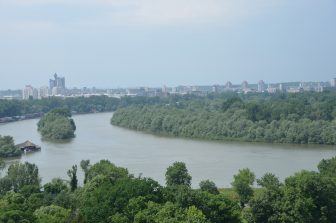
After listening to Tamara’s stories, we moved to the point in the park where we could see over the Sava River and Danube River.
Across the Sava River, we saw New Belgrade, which was built after WW2, and a little right from there there was a village with red roofed houses.
This village is called Zemun, a historical place.
Now Zemun is a part of Belgrade, but it used be a different town and in the 18th century it was even a different country.
Belgrade in those days was ruled under Ottoman Turkey, but Zemun was a part 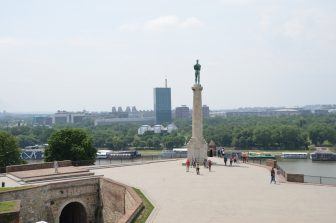
We also saw a statue called Pobednik (Messenger of Victory).
This is a statue of a naked man which was made after WW1 to be the symbol of the city.
Originally, it was planned to be put in the centre of the city, but people complained “Women have to walk with lowered eyes”, so they decided to put it in the park.
Apparently, the nudity refers to freedom.
We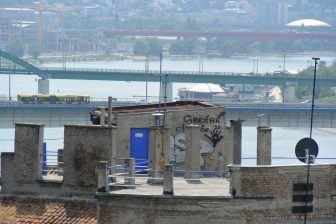
As we know, WW1 was started because the Austrian prince was killed on a bridge in Sarajevo, but the actual place where the battle started was a part of this fortress.
Then we came down from the park and that was the end of the two and a half hours’ tour.
We learned a lot, from the ancient history to the modern history, and I enjoyed it very much.
This was a free walking tour, but it is an unwritten rule that we give the guide a tip.
We gave 2000 dinar (about £15, €17, $20) and she looked happy.
[ May 2018 ]

